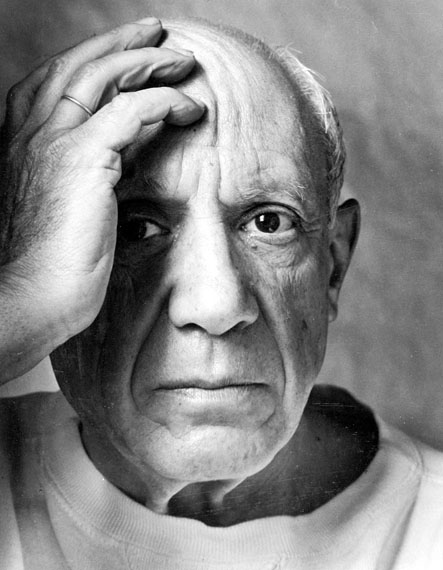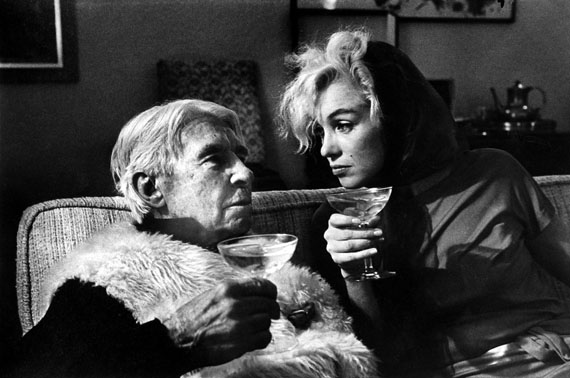
Arnold Newman »
Portraits and Abstractions
Exhibition: 28 May – 7 Sep 2014

The Lumiere Brothers Center for Photography
Bolshaya Polyanka street, 61, bld. 1
119180 Moscow
+7 495-228 98 78
Mon-Sat 11-20

Arnold Newman
"Portraits and Abstractions"
Exhibition: May 28 – September 7, 2014
The Lumiere Brothers Center for Photography is proud to present an exhibition of one of the finest portrait photographers of the 20th century, Arnold Newman. The exhibition will include 122 authors’ prints and feature iconic portraits of European and American luminaries in the arts, the sciences, politics and business as well as his early abstract studies.
Arnold Newman (1918–2006) has been recognized as the father of “environmental portraiture” though his work can be considered as inheritance of European tradition of portrait painting: “The image had to be a complete visual concept where even the composition could help the mood and offer information reflecting my approach. The surroundings had to add to the understanding of the person. And it wasn’t new for me. Recalling Flemish paintings – a man in the ambience of his cabinet, his paraphernalia spread on the velvet of his table, he’s counting golden coins. There are objects referring to his activities on the wall. Everything tells us of who this person could be.” Newman found his vision in the empathy and fascination he felt for artists and their work that kept inspiring him. His sitters were Alfred Stieglitz and Georgia O’Keefe, Igor Stravinsky and Leonard Bernstein, Piet Mondrian and Max Ernst, Mark Chagall and Pablo Picasso among many others. Arnold Newman discovered that just as you can make a hieroglyph or a logo stand for a thing, an idea or a well-known brand, you can use a totally realistic image to stand for an actual person. Whenever people thought of that person, they would think of your photo.
Newman was born in New York in 1918 and became interested in art during his high school years. Inspired to become a painter, he studied art under a scholarship at the University of Miami from 1936 to 1938 but had to abandon his classes because of his family’s financial problems. He greatly appreciated his teachers though museums and art galleries were his genuine school. “Outside the classrooms there was all this wonderful stuff [modernism] we were just beginning to be shown and accepted. It had been in America -Picasso, Braque, Matisse, Mondrian, Chagall, and there was so many things, and LIFE magazine, which was very important in those days, was beginning to show them.”
�

He took a job in a portrait studio in Philadelphia where he began to learn photographic techniques turning out hundreds of 49-cent portraits. Soon he fell in with a group of young photographers who studied at the Philadelphia School of Industrial Arts. Louise Faurer, Sol Mednick, Irvin Penn and Newman’s boyhood friend, Ben Rose, attended photography workshop with Alexey Brodovitch, who later became a celebrated art director at Harper’s Bazaar. Inspired by the documentary images of the Farm Security Administration photographers and exhibition of Walker Evans’ American Photographs at the Museum of Modern Art in New York, Newman began to train his borrowed camera on street scenes near the studio and photograph people on the front porches of their homes. “I found that the people in their own environment were more fascinating than the artificial atmosphere of the studios I had to work. This motivated my growing idea of making photographs of people in their natural environment.”
In 1939 Newman first met great photographer and gallerist Alfred Stieglitz who encouraged him by referring to his work as a serious project and telling him to focus on his finished prints. By 1940 Newman had diverted his attention to a series of more formal, abstract works that seem to be inspired by Neoplasticism and late Mondrian’s paintings. Later Newman noted how important these work were to the foundation and development of his vision and style. As a result of these explorations of abstractions and still life, the backgrounds of Newman’s portraits have never been secondary aspects but wholly calculated and composed to bring each geometric element together in a dynamic composition that frames the sitter.
Newman’s first New York exhibition, in collaboration with Ben Rose, opened in the fall of 1941, was a great success. His talent was recognized by art directors of major publications, curator of the new photography department at the Museum of Modern Art and author of the very first and still significant overview research on the history of photography (1937) bought his prints for the museum collection. Soon Newman started shooting experimental portraits of the artists he met and their studios, solidifying the strategies and style of “environmental portraiture”, which have become his best-known and most influential work.
During the course of an enormously productive career he contributed to the most influential magazines such as New York, Vanity Fair, Life, Look, Harper’s Bazaar, Holiday, Esquire, Scientific American, New York Time Magazine and many others.
�

